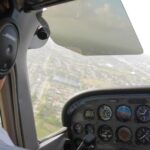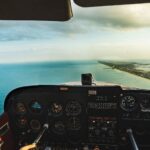By Captain Richard Hyslop, American Airlines (retired)
Have you ever listened to two airline pilots talking shop? They have a language and terms totally foreign to the public and most GA pilots. Terms like “EPR, TAT, V1, V2, Mach” have little meaning for the private pilot. With the hiring boom going on at all the major airlines and with your aviation goals in mind, you might be interested in learning this new language.
Let’s begin with airspeed. IAS (Indicated Air Speed) is a term all pilots recognize and appreciate the importance of. The airline pilot uses CAS (Calibrated Air Speed). While CAS may look the same, it is much more accurate and takes into consideration errors due to location of the sensors and instrument error. But even the CAS has its limits and is not used at high altitudes where Mach (speed relative to the speed of sound) is used. The use of Mach keeps all aircraft at high altitudes using the same reference airspeed. Of course, we cannot forget one of the most important measures of speed, TAS (True Air Speed). The TAS is the true measure of how fast you are traveling between your departure and your destination airports, taking into consideration wind, temperature, altitude and all measurable errors. TAS is used on filed flight plans. To help us in determining the TAS in flight, we have an ADC (Air Data Computer) that accumulates all the variables and gives the pilot a read out.
Since TAS is temperature dependent, let’s look at SAT and TAT next. SAT (Static Air Temperature) is whatyou get from the ATIS (Automatic Terminal Information Service).
Think of SAT as what the engine is looking at to give you performance. TAT (Total Air Temperature) is what the airplane feels on its surfaces. The faster you fly the more the TAT increases. TAT is used for things like turning on engine or wing anti-ice.
Next, let’s look at N1 and EPR. When dealing with jet engines, you will commonly hear the terms EPR (Engine Pressure Ratio) or N1 (the front compressor section of a jet engine). EPR is the most accurate and best measure of the thrust an engine is putting out. While very accurate, EPR can be misleading if either the inlet or outlet EPR probe is blocked. The N1, on the other hand, is very reliable because it is a direct reading of the rotational speed of the low-pressure compressor. N1 is not as accurate as the EPR but more reliable. Some jet engines have gauges for both EPR and N1.
In the airline world, the takeoff speeds are designated as V1, Vr, V2. Since the weight of our aircraft can vary in large amounts, these V speeds change with nearly every takeoff. Consider only the weight of fuel. A Boeing 767 carries fuel from 30,000 lbs. to 162,000 lbs., depending upon the flight plan. With this in mind, we assign the term V1 to the speed (depending on weight) at which we will no longer consider stopping on the runway should a problem arise. Vr is the assigned speed we use to begin rotation.
And then V2 speed is considered the Takeoff Safety Speed
(L/D max speed).
Just like our changing takeoff speeds, our landing speeds are dependent upon the aircraft weight and how much of that fuel load was burned off during that long flight. In the case of landing, we use the term Vref, where our speeds are dependent upon the flap settings.
We have just scratched the surface of this new language with much more to come. In future articles we can start looking at some of the FAA requirements placed on our takeoffs and landings, along with some airports that can test our skills as professional aviators.
– Clear Skies and Soft Landing










